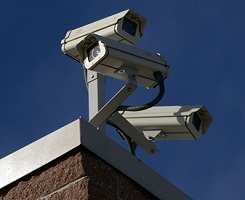In the United States, the rapid adoption of IoT in smart homes is supporting market growth. Consumers are shifting from traditionally mountable Wifi cameras to the deployment of smart home security cameras to increase the security of their premises. A new report from Grand View Research on the subject, suggests this sector could reach USD 12.74 billion in 2030, expanding at a CAGR of an impressive 19.8% from 2023 to 2030.
Advanced smart home security cameras offer several benefits, which boost their installation in many households across the region. The ease of installation and easy availability of smart home security cameras drive the product demand. The research finds that the Covid-19 pandemic has brought about a seismic shift in people’s attitudes toward wellness and security.
The industry has been witnessing a few pivotal factors determining consumers’ spending on security devices i.e., working from home, conducting purchases through online platforms, and additional spending leeway realised from not having any outdoor leisure and travel expenditures. The initial phase of the pandemic saw the industry’s supply chain at a standstill due to strict lockdown orders imposed by various countries. This has led to a supply shortage in a few economies and consumer demand being unmet. Nevertheless, there has been a considerable focus on home security during this time owing to the growing emphasis on home-related products, such as smart home devices.
The wired camera segment dominated the industry in 2022. According to the analysts, wired security cameras are more secure, less expensive, and highly reliable because they can run on battery power. Consistency in video production is more important than ever.
There are no monthly charges for cloud storage. Companies are constantly adding new features to wired cameras, such as improved night vision, two-way audio with echo cancellation, and customisable motion zones. The doorbell camera segment is expected to register the fastest CAGR from 2023 to 2030. An increasing number of smart cities in several countries are boosting the demand for safety and surveillance products in the market. Rapid urbanisation has resulted in a large number of people living in multistorey apartments due to space constraints.
This, in turn, is driving the need for robust smart security systems. The findings also showed that the increasing number of developments and innovations implemented by companies through various R&D activities and investments have significantly contributed to market growth. To manufacture innovative smart home security cameras, companies are focusing on enhancing their production capacities through technological integration for production processes.








